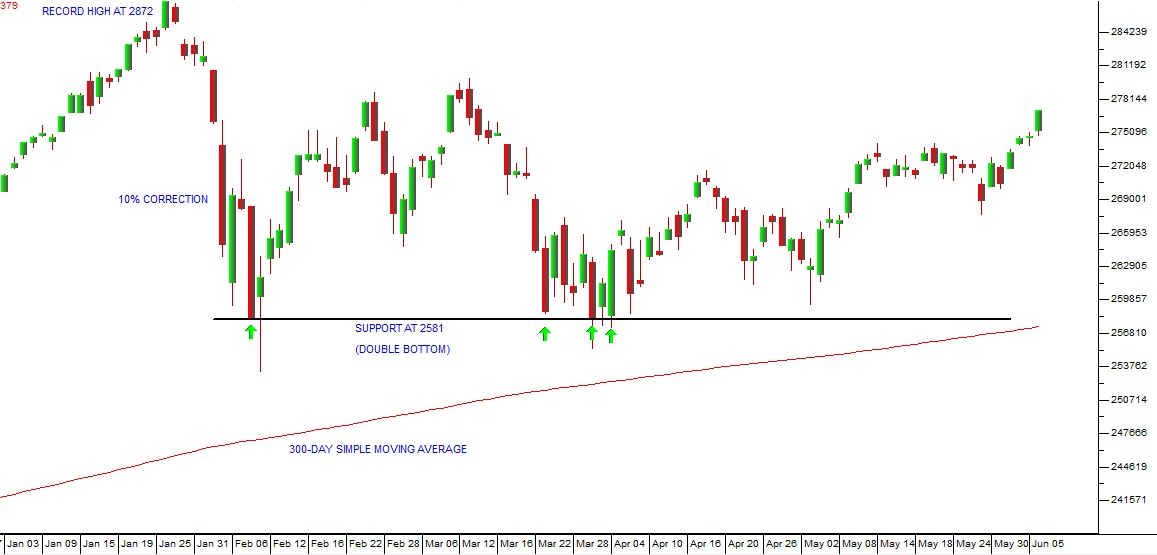Is the Correction Ending?
7 June 2018 By PDSNET
Since the beginning of this year, the US economy has been adding new jobs at the amazing rate of 207 000 on average every month. Wages are also creeping up while the inflation rate remains at a stubbornly low 2,2%.
The effect is that Americans are steadily getting better off every month - more and more of them are employed and all of them are getting a higher average wage. This is causing them to spend more. As they feel better off, they are increasingly using credit to buy the things that they want – mainly because they perceive their future to be more optimistic.
Not only does this create more jobs at home, it creates jobs overseas as Americans import more products and raw materials from foreign countries, including South Africa.
And yet, while all this is going on, the S&P500 index is wallowing in a correction. Of course, corrections are part of any market’s progress. Nothing in the markets moves in a straight line and the S&P was long overdue for this correction. Current indications are that the correction will be over soon.
Markets, including Wall Street, are driven by expected future earnings. In America, there are a number of analysts predicting the earnings per share (EPS) for 2018 of the 500 companies which make up the S&P index. For example, Tony Dwyer of Cannacord Genuity suggests that earnings will be as much as $160 per share on average for the year. He also predicts that the S&P will make a new record high soon and end the year at 3200 (it closed last night at 2772).
We agree with this assessment and even suggest that he may turn out to be conservative. If we look at the S&P500 chart it is evident that this correction, which is now four-and-a-half months old, is ending. Consider the chart:
